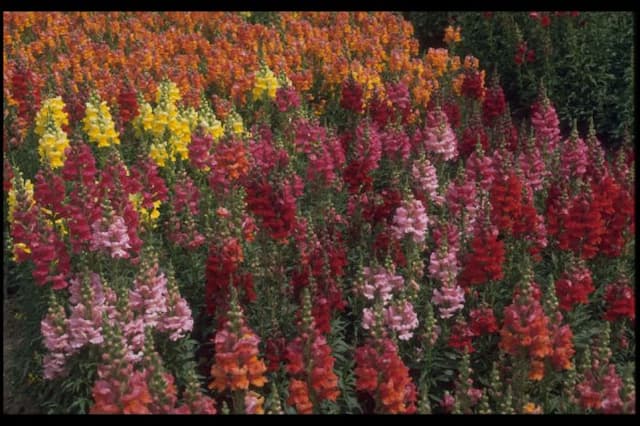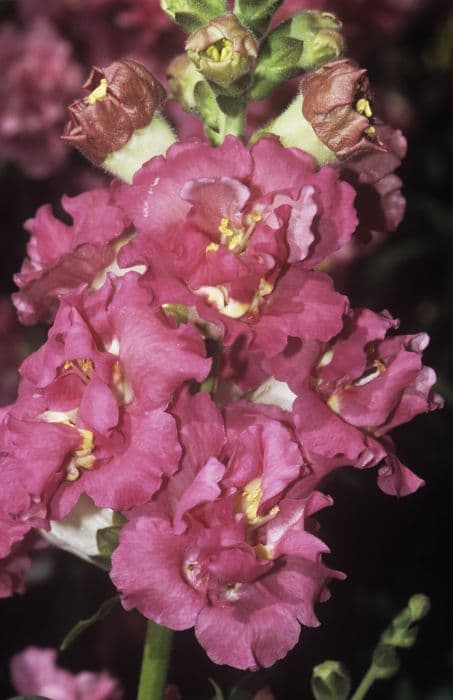Whitewood Hebe Hebe albicans

ABOUT
The Hebe albicans, also commonly known as the "Shrubby Veronica," showcases a compact mound of evergreen foliage that remains attractive throughout the year. Its leaves are small, with a broad, rounded shape, embracing shades of blue-green that can sometimes display a silver-gray hue, creating a distinct and pleasing textural effect. The plant's surface is often dense, giving it a lush and robust look. During the blooming period, which typically occurs in the late spring to early summer, the Shrubby Veronica produces an abundance of flower spikes. These spikes are adorned with small, tightly clustered flowers that usually bloom in different shades of white or pale lilac, adding a gentle contrast to the foliage. The tiny blossoms are favored by bees and butterflies, making the plant an attractive option for pollinator-friendly gardens. The overall appearance of the Hebe albicans is neat and tidy, with a symmetric growth habit that often distinguishes it as an excellent choice for formal garden settings or as a specimen in mixed borders. Its evergreen nature and the color of its leaves make it a valuable plant for creating year-round interest in gardens, offering a cool-colored presence among brighter green plants. The plant's resilience and attractive form have made it a popular choice for gardeners looking to add structure and beauty to their outdoor spaces without the complexity of constant care and maintenance.
About this plant
 Names
NamesFamily
Plantaginaceae.
Synonyms
Whitewood, Shrubby Veronica.
Common names
Veronica albicans, Hebe pinguifolia var. albicans, Hebe albicans var. albicans.
 Toxicity
ToxicityTo humans
Hebe albicans, commonly known as Whitewash hebe, does not have a well-documented profile of toxicity to humans. While there are numerous plants in the genus Hebe that are considered non-toxic, there can always be variability in individual sensitivity to plants. In general, it's not advisable to ingest plants that are not commonly recognized as food, as they can cause gastrointestinal discomfort or allergic reactions in sensitive individuals. If you suspect poisoning from any part of the Hebe albicans, it is essential to seek medical advice.
To pets
Whitewash hebe is generally not known to be toxic to pets, but as with any non-food plant, it could potentially cause mild gastrointestinal upset if ingested. Pets, like cats and dogs, can sometimes chew on plants out of curiosity or boredom, leading to symptoms such as vomiting or diarrhea. To ensure the safety of your pets, it's prudent to prevent them from ingesting this or any plant. If your pet shows signs of distress after consuming parts of a Hebe albicans plant, contact your veterinarian.
 Characteristics
CharacteristicsLife cycle
Perennials
Foliage type
Evergreen
Color of leaves
Green
Flower color
White
Height
3 feet (0.91 meters)
Spread
3 feet (0.91 meters)
Plant type
Shrub
Hardiness zones
7
Native area
New Zealand
Benefits
 General Benefits
General Benefits- Ornamental Appeal: Adds aesthetic value to gardens with its silver-grey foliage and purple-white flowers.
- Drought Tolerance: Requires minimal watering once established, making it suitable for water-efficient landscaping.
- Ease of Care: Generally requires low maintenance and is resistant to most pests and diseases.
- Wildlife Habitat: Attracts bees, butterflies, and other pollinators, supporting biodiversity.
- Year-Round Interest: Retains foliage throughout the year, providing consistent visual appeal.
- Soil Erosion Control: Helps stabilize soil in sloped areas and prevents erosion with its root system.
- Versatility: Can be used in a variety of garden settings, such as borders, containers, or as a groundcover.
- Fast Growth: Establishes quickly in appropriate conditions, offering rapid coverage and landscape filling.
- Privacy Screen: When grown in groups, it can act as an informal hedge or privacy screen.
 Medical Properties
Medical PropertiesThis plant is not used for medical purposes.
 Air-purifying Qualities
Air-purifying QualitiesThis plant is not specifically known for air purifying qualities.
 Other Uses
Other Uses- Whitewash Hebe can be used as a natural dye for fabrics, producing subtle green hues when used in traditional dyeing methods.
- The plant is often planted in coastal gardens because it is resistant to salt spray and can help prevent soil erosion.
- In frost-prone areas, Whitewash Hebe may be grown in containers and brought indoors during the colder months, serving as an evergreen decoration.
- Gardeners can use the dense foliage of Whitewash Hebe as a nesting site for beneficial insects, providing natural pest control.
- The flowers of Whitewash Hebe attract pollinators such as bees and butterflies, supporting biodiversity in the garden ecosystem.
- The shrub can be shaped into topiary for decorative landscaping purposes, giving structure and form to gardens and public spaces.
- Whitewash Hebe's compact growth habit makes it useful for creating low borders or edgings along walkways and garden paths.
- Due to its hardiness, Whitewash Hebe is also used for revegetation projects in degraded or disturbed land areas.
- The dense, evergreen nature of the plant provides year-round privacy screening for gardens and outdoor living areas.
- This plant can be integrated into thematic gardens, such as rock or alpine gardens, due to its tolerance for poor soils and its compact size.
Interesting Facts
 Feng Shui
Feng ShuiHebe is not used in Feng Shui practice.
 Zodiac Sign Compitability
Zodiac Sign CompitabilityHebe is not used in astrology practice.
 Plant Symbolism
Plant Symbolism- Youth: The common name 'Hebe' comes from the Greek goddess of youth, showcasing the plant's association with maintaining and symbolizing a youthful spirit and vitality.
- Longevity: Hebe albicans is known for its resilience and ability to thrive in various conditions, thus representing long life and endurance.
- Protection: The evergreen nature of this plant, with its tough leaves, often symbolizes protection and defense against adversity.
- Unity: As this plant often grows into a dense shrub, it symbolizes unity and togetherness, bringing a sense of community or family bonding.
 Water
WaterWhitney's White Hebe, a drought-tolerant shrub, requires watering sparingly. During the growing season in spring and summer, water the plant once a week, ensuring that the soil is allowed to dry out between waterings. Offer about a half gallon for smaller plants and up to two gallons for larger, established shrubs, depending on the size and age of the plant. In the fall and winter, reduce watering to once every two weeks or even less if it receives rainwater, as overwatering can lead to root rot.
 Light
LightWhitney's White Hebe thrives in full sun to partial shade conditions. The ideal spot for this plant would be a location where it receives at least six hours of sunlight a day, but it can also tolerate some light afternoon shade. Avoid placing it in deep shade as it will hinder the plant’s growth and flowering potential.
 Temperature
TemperatureThe Whitney's White Hebe prefers moderate temperatures and will do best if maintained within 50°F to 75°F. It can withstand minimum temperatures down to around 30°F, but it should be protected from frost. Maximum temperature tolerances are not often tested as this plant can handle typical summer conditions in most temperate zones.
 Pruning
PruningPruning Whitney's White Hebe is essential for maintaining its shape and encouraging bushier growth. Lightly prune the plant in the spring after the last frost by removing any dead or damaged branches and shaping as desired. Pruning can be repeated after the plant blooms in summer to encourage a second bloom. Avoid heavy pruning as it can be detrimental to the plant.
 Cleaning
CleaningAs needed
 Soil
SoilWhitewood Hebe thrives best in well-draining soil with a slightly acidic to neutral pH of 6.5 to 7.5. A mix of two parts peat, one part perlite, and one part pine bark is well-suited for this plant, allowing for good aeration and drainage.
 Repotting
RepottingWhitewood Hebe should be repotted every 2-3 years or when it becomes root-bound. It's best to repot in the spring, using a slightly larger pot to allow for growth.
 Humidity & Misting
Humidity & MistingWhitewood Hebe prefers moderate to high humidity levels, ideally ranging from 50% to 70%. Constant high humidity can lead to fungal issues, so good air circulation is also important.
 Suitable locations
Suitable locationsIndoor
Place Whitewood Hebe in bright, indirect light indoors.
Outdoor
Plant Whitewood Hebe in a sunny to part-shade location.
Hardiness zone
7-10 USDA
 Life cycle
Life cycleThe Hebe albicans, commonly known as the White Hebe, begins its life cycle with seed germination, which occurs in moist, well-drained soil with ample sunlight. After sprouting, the seedling slowly matures into a young plant through a vegetative stage characterized by the development of its signature silvery-green foliage. As the plant enters adulthood, it starts to produce small white flowers during the summer months, which are crucial for the reproductive phase. Pollinators such as insects are attracted to the flowers, aiding in cross-pollination. Following pollination, seeds develop and are eventually dispersed into the environment, allowing for the growth of new plants. This perennial shrub may also undergo vegetative propagation through cuttings, resulting in a clone of the parent plant, thus adding another method for the species' perpetuation.
 Propogation
PropogationPropogation time
Spring-Summer
Hebe albicans, commonly known as Whitewash Hebe, can be propagated most effectively through semi-hardwood cuttings. The best time to take these cuttings is in late summer. To do so, select a healthy stem of the current or previous year's growth and cut a 4 to 6-inch (10 to 15 cm) piece just below a leaf node. It's important to use sharp, sterilized pruning shears for a clean cut to avoid infection. Strip the leaves from the lower half of the cutting and dip the cut end into rooting hormone to encourage root development. Next, insert the cutting into a well-draining potting mixture. Keep the soil moist but not waterlogged and place the pot in a warm area with indirect sunlight. Roots typically form in a few weeks, at which point the cutting can eventually be transplanted into the garden.





![Snapdragon [Pretty in Pink]](/_next/image?url=https%3A%2F%2Fplants-admin.emdemapps.com%2Fimages%2Fplants%2F%2Fimages%2F604b5cb3b5385.png&w=640&q=75)



